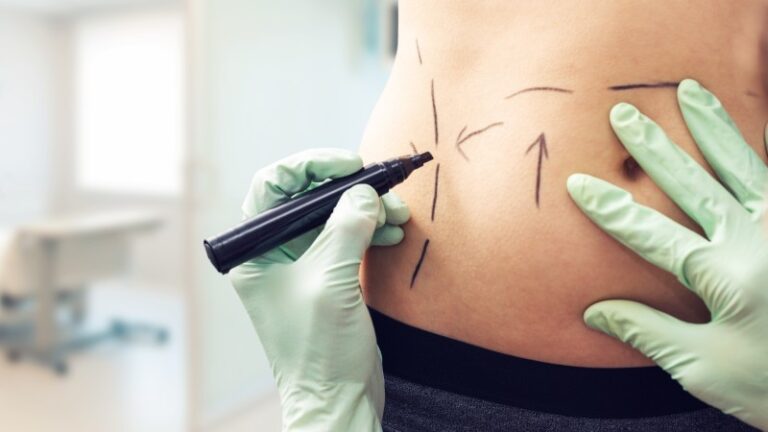Each year, approximately 15 million cosmetic procedures are performed in the US, according to the American Society of Plastic Surgeons (ASPS).[] As with any surgery, plastic surgery carries risks.
Making sure your patients are safe during cosmetic surgery is imperative, and doctors should counsel their patients about the potential side effects of these three popular cosmetic procedures.
Assess your patient’s risk tolerance
Researchers write to Plastic and Reconstructive Surgery (PRS) Global Open Note that tummy tucks can be particularly risky, more so than Brazilian butt lift (colloquially known as BBL), facelifts, rhinoplasty, or surgeries that combine multiple procedures.[]
“Each complication poses a challenge to the plastic surgeon and compromises the patient-physician relationship,” warn the authors of a review published in Plastic Surgery Archive.[] “This is of particular importance for cosmetic procedures because these are generally elective procedures undertaken by healthy patients whose expectations may be ruined by a subsequent complication.”
Abdominoplasty
Abdominoplasty (AKA “tummy tuck”) carries the highest risk of mortality, with 1 death for every 10,000-13,000 procedures, as reported in PRS Global Open.
The rate of venous thromboembolism (VTE), a major complication, is 0.4%, while the risk of minor complications, including hematoma and infection, is 2% and 2% to 7%, respectively.
The goal of abdominoplasty is to reshape the contours of the body by excision of excess skin and fatty tissue to reshape the abdominal wall. Modern techniques, its authors explain Plastic Surgery Archive review, involves limited dissection of the abdominal flap, folding of the rectus abdominis fascia, and excision of a portion of the skin and underlying subcutaneous tissue down to the level of Scarpa’s fascia.
It is worth noting that abdominoplasty is often combined with liposuction (ie liposuction). This leads to higher satisfaction rates among some patients and has become a common procedure, despite initial concerns about increasing the risk of flap necrosis.
Brazilian butt lift
Buttock augmentation with fat grafting—referred to as a Brazilian butt lift (BBL)—has become increasingly popular in the US. In 2018, there was a 15.8% increase in these procedures compared to 2017, according to data reported in PRS Global Open. With increased exposure comes safety concerns.
In 2015, a group of Mexican and Colombian surgeons reported 14 intraoperative deaths during liposuction, as well as 8 perioperative deaths.
Results of a 2017 study found that mortality due to buttock fat grafting ranged between 1 death per 2,351 and 1 per 6,214 procedures, based on an international survey of 4,843 plastic surgeons.
A survey distributed among members of the ASPS and the International Society of Aesthetic Plastic Surgery assessed fat embolism and buttock fat graft-related deaths during the previous 24-month period. This research was conducted after a strong recommendation that BBLs should only be performed with subcutaneous fat augmentation. Overall, the mortality rate was 1:14,921, which was lower than that of abdominoplasty.
Liposuction
Liposuction emerged in the 1980s, and its introduction immediately raised concerns about patient safety and unacceptable mortality rates. The article at PRS Global Open states that these high rates were secondary to massive blood loss in high-volume liposuction with prolonged operative time, as well as thromboembolism, pulmonary edema, and abdominal/viscosity perforation.
ASPS then formed a task force to assess patient safety during these procedures.
“Patients’ fluid status was poorly managed, resulting in both under- and over-resuscitation,” wrote the PRS Global Open authors. “With the advent of the superwet technique over soft liposuction and the proper training of board-certified plastic surgeons, the mortality rate has decreased dramatically.”
As for other complications, there is a risk of hematoma of 0.15%. 0.10% infection risk. and <0.1% risk of VTE. The current mortality risk is 1.3:50,000.
Counseling your patients
Authors write in PRS Global Open said cosmetic surgery is safe when performed by a board-certified plastic surgeon in an accredited facility.
Additional guidance includes the following:
-
Patients who smoke should not undergo plastic surgery due to higher complication rates.
-
Patients should have realistic expectations of what can and cannot be achieved with plastic surgery.
-
Complex combination procedures that are longer than 6 hours should be avoided due to an increased risk of complications.
As for surgeons, the authors recommend: “Always strive to provide the best and safest care in and out of the OR, and never leave the OR until the patient looks as good as possible to the best of your ability.”
What does this mean for you?
Regardless of specialty, all doctors will come into contact with a patient interested in cosmetic surgery — every doctor can help counsel their patients about the expectations and risks of cosmetic procedures. The three common surgical procedures that carry a risk of mortality are abdominoplasty, BBL, and liposuction, in that order. Keep in mind that smokers are not good candidates for plastic surgery and complex procedures with an operating time of more than 6 hours should be avoided.
Read next: The paradoxical side effect of CoolSculpting: Melt away the pounds or freeze them in place?


